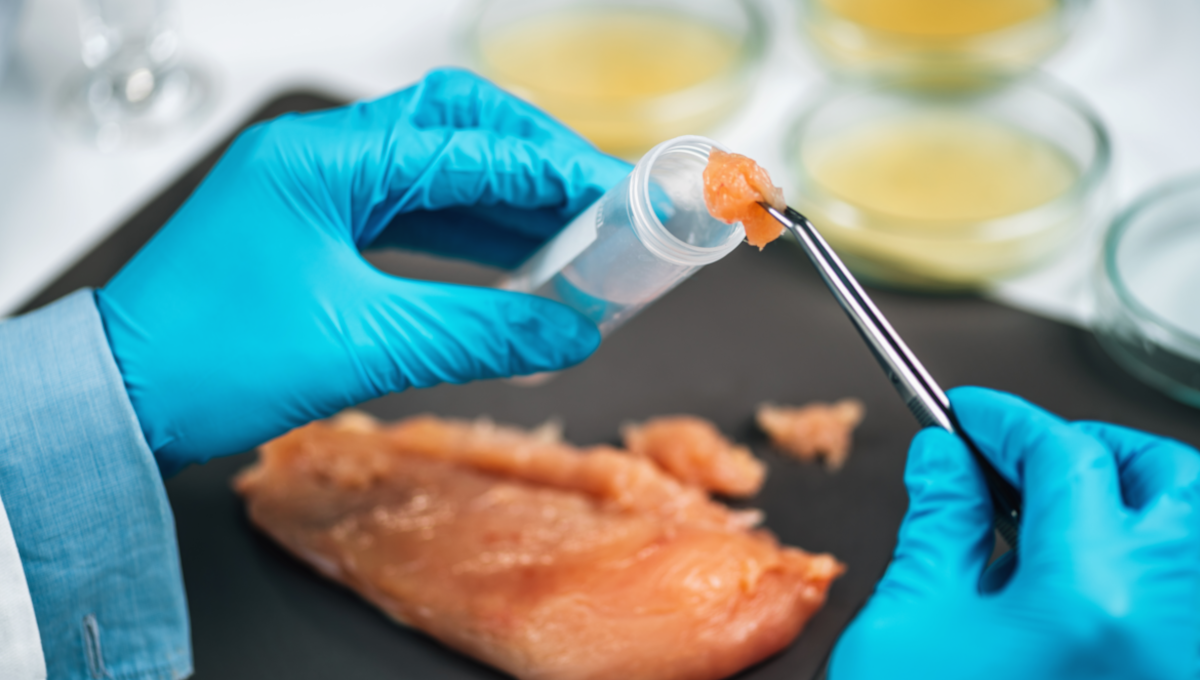
A recent study has found that the majority of salmonellosis risk from raw chicken in the United States is driven by a small fraction of products contaminated with high levels of highly virulent Salmonella. This discovery suggests a need for more targeted food safety measures.
Despite efforts to reduce Salmonella in poultry products, foodborne illnesses remain challenging for public health experts. Researchers believe a shift towards more nuanced, risk-based food safety approaches in the poultry industry is necessary.
The study analyzed data from the 2012 USDA-FSIS Baseline parts survey and the 2023 USDA-FSIS HACCP verification sampling. It found that chicken parts with contamination levels exceeding one colony-forming unit per gram (1 CFU/g) of Salmonella pose the highest risk to public health. This risk is even greater in products contaminated with highly virulent serotypes, such as Enteritidis, Infantis, and Typhimurium.
Key findings from the study include:
- High contamination levels: Although only a small percentage of chicken parts have high levels of Salmonella contamination, these parts are responsible for most salmonellosis cases. The Baseline data indicated that 68% of illnesses were linked to the 0.7% of products with more than 1 CFU/g of Salmonella.
- Serotype-specific risk: High-virulence serotypes are prevalent in certain chicken parts and contribute disproportionately to illness. For example, products with more than 1 CFU/g of serotypes like Enteritidis, Infantis, or Typhimurium accounted for 69% of illnesses, while low-virulence serotypes like Kentucky ST152 contributed minimally to human cases.
- Updated data insights: The 2023 HACCP data, which used more precise contamination measurement methods, reinforced these findings. It showed that 99.8% of illnesses were linked to the 1.3% of products with more than 1 CFU/g of Salmonella.
Despite reductions in Salmonella prevalence in poultry, the rate of human illnesses has not decreased proportionally. This suggests that new regulatory strategies are needed. The study recommends focusing on high levels of contamination and high-virulence serotypes.
Proposed interventions include:
- Enhanced testing and control measures: Stringent testing for high contamination levels and specific high-virulence serotypes could significantly reduce public health risks.
- Serotype-specific vaccination: Vaccinating poultry against high-virulence serotypes, such as Enteritidis and Typhimurium, could reduce their prevalence in chicken products.
- Improved process controls: Adopting control limits for total Salmonella levels and using statistical process control to monitor and enhance processing stages could help manage contamination more effectively.
The study’s findings align with previous risk assessments of other poultry and meat products, indicating that high-level contamination is a broader issue. According to the researchers, similar studies in ground turkey and ground beef have shown that products with higher contamination levels pose a significantly greater risk of illness.
The study was supported by a U.S. Poultry and Egg Association grant and conducted by Stasiewicz and Wiedmann, members of the Coalition for Poultry Safety Reform, which comprises volunteers from the poultry industry, consumer groups, and academics.
The full study can be found here.
(To sign up for a free subscription to Food Safety News, click here.)